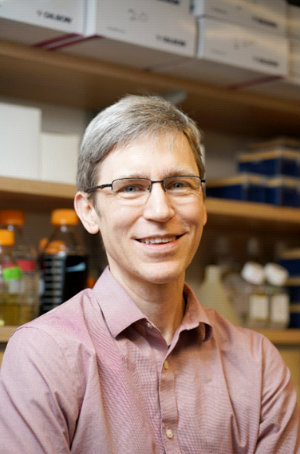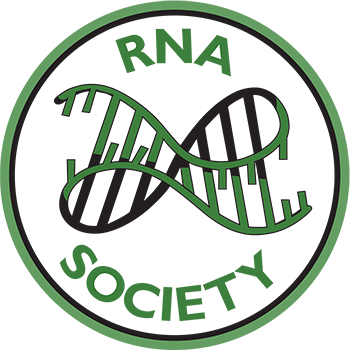Joel McManus, PhDWritten by: Julieta Rivosecchi, PhD Posted: September 25, 2025  Dr. Joel McManus is an Associate Professor of Biological Sciences at Carnegie Mellon University in Pittsburgh, US. His love for RNA science was sparked in college when he stumbled upon a friend’s molecular biology textbook and later that year encountered the “RNA world” hypothesis. Since his graduate studies, Joel has explored different aspects of RNA biology, from pre-mRNA splicing and RNA structure to how gene expression evolves across species. Today, his lab uses high throughput assays and bioinformatics in yeast and human cells to investigate how mRNA sequences in untranslated regions (UTRs) affect translation regulation. Ultimately, their goal is to define the “rules” governing how UTRs regulate gene expression from their mRNAs. Joel’s scientific journey began at Hiram College, a liberal arts college in Northeastern Ohio. Though research opportunities were limited, summer internships studying ribozymes with Dr. Martin Tuck at Ohio University and Adrian Ferré-D’Amaré at Fred Hutchinson Cancer Research Center triggered a lifelong fascination with RNA and its catalytic potential. Today, the ribosome, itself a ribozyme, remains his favorite RNA: “The ribosome is perhaps the most important molecular machine that contributed to the development of life on Earth,” he states. One of Joel’s proudest scientific wins came during his PhD, when he finally got in vitro splicing assays to work after a long battle with RNA degradation. Joel was working in the lab of David A. Brow at the University of Wisconsin Madison, studying the structure of the yeast U6 small nuclear RNA and its role in the catalytic activity of the spliceosome. “No amount of bleaching pipettors, DEPC treating water, or adding RNase inhibitors seemed to help. By process of elimination, I eventually tracked the problem down to RNase contamination in one of the protease inhibitors we were using,” Joel recalls. That elusive detail taught him the value of methodical troubleshooting: “There’s always a physical reason for unexpected results, and you can usually discover it if you think through every possibility” and test them systematically. Joel continued his training as a postdoctoral fellow in Dr. Brenton Graveley’s lab at the University of Connecticut Health Center, where he studied trans-splicing and the evolution of alternative splicing in Drosophila. He joined the Graveley Lab in 2007 to study splicing using microarrays, but an unexpected shift reshaped his career. The following year, the lab acquired an Illumina sequencer, converting all microarray projects into sequencing-based assays. “Learning how to use the sequencer was challenging, but it opened an enormous number of opportunities to develop new assays. I had extremely fortunate timing.” Joel’s mentors have left a lasting impression on his scientific approach, shaping his rigor and curiosity. “My PhD thesis advisor, Dr. David Brow, taught us to always think through alternative possibilities and to design as many experimental controls as possible. My postdoc advisor, Dr. Brenton Graveley, taught me to think big, capitalize on new technologies and look for interesting edge cases that can reveal novel molecular mechanisms.” Nowadays, Joel finds inspiration in Nobel Laureate Dr. Katalin Kariko and “her relentless search for RNA therapeutics, ultimately overcoming enormous obstacles and challenges.” He highlights how “her life’s work has saved millions of lives and created a new class of drugs with outstanding potential.”
In 2011, Joel started his lab at Carnegie Mellon University (CMU) as an assistant professor. He was drawn to CMU by its excellence in biology and computer science, a perfect match for his lab’s dual expertise in wet-lab experimental biology and dry-lab computational biology. As a new PI, securing his first grant represented the greatest challenge in his career. “While I believed I had good ideas, there always seemed to be some unexpected issue or problem that left my applications just short of acceptance,” he reflects. He overcame it by seeking feedback from experienced colleagues early in the writing process. Driven by the reward of sharing his knowledge with others, he dedicates time to reaching out to the community at different levels. For example, he has promoted science at very early stages by presenting at local elementary and middle schools. Joel has also engaged with older students and trainees by participating in many outreach programs including an NIH supported Minority Access to Research Careers (MARC) program at CMU. When describing how he does and thinks about experiments, Joel cites the words of George Box, a famous statistician from the University of Wisconsin Madison: “All models are wrong, but some are useful,” which is meant to encourage scientists to explore where models don’t work, because that’s where discovery lives. He also admires the approach to science championed by Dr. Anne Ephrussi, who said "We must be extremely rigorous in our analyses and ensure we have done everything possible not to prove our hypotheses, but rather to disprove them. It’s about not falling in love with one’s ideas and being misled by results." His advice to emerging scientists is “to think critically – about your own results, about published studies, and most importantly about the models we have for biological processes.” Joel closely follows the publications of the RNA journal and highlights a recent study by Hoya et al. on the NEAT1 long noncoding RNA. Though NEAT1 is conserved across mammals, its knockout in lab mice shows no obvious phenotype. However, when NEAT1 KO mice are exposed to cold, beige adipocyte development is extremely impaired. For Joel, this paper underscores a key lesson: “Conserved sequences almost always have important functions, even if they aren’t immediately obvious in lab conditions.” If you’d like to connect with Joel, you’ll likely find him at the annual RNA Society meetings, a community he describes as uniquely welcoming. You can also explore his lab’s work at https://labs.bio.cmu.edu/mcmanus/ or follow their updates on Bluesky: https://bsky.app/profile/mcmanuslabrna.bsky.social. |
